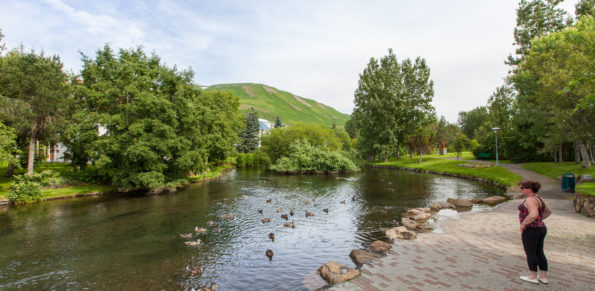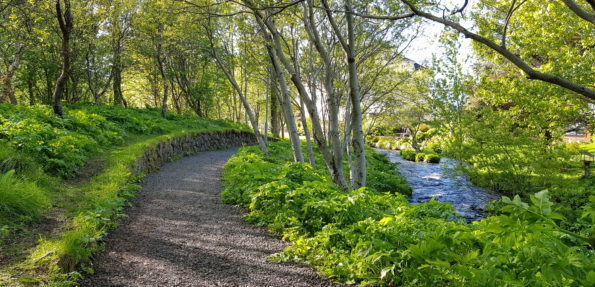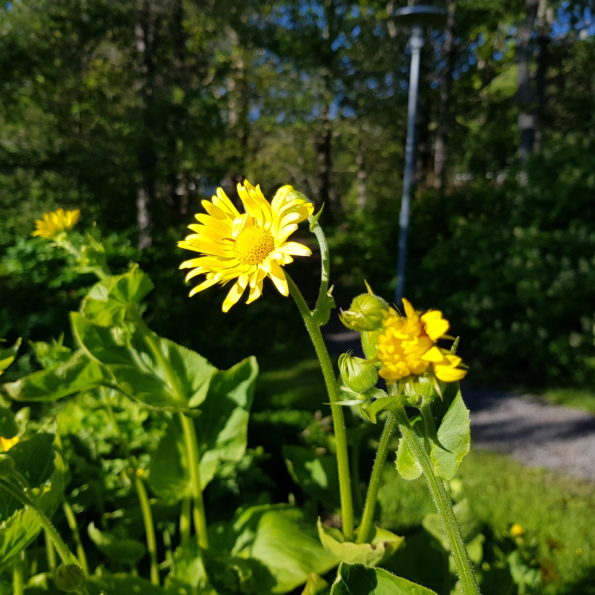
For those looking for a gentle stroll, the town’s park called Skrúðgarður is an attractive place to visit at any time of year. A sympathetic place for the young and old, the gardens act as a gateway to the outside world, a great starting point to walks out of town. Small wooden bridges criss-cross the bubbling brook of Búðara, while picnic benches offer spots to sit a while and enjoy the view.
In 1975, on the initiative of a local women’s organization the park was developed and 391 trees planted. These trees proof everyone wrong who claims that there are no tress in Iceland. Today there are more than 100 species of trees and shrubs in the park and over 100 perennials, including samples of all indigenous species.
Among this great variety a few stand out of the crowd that are not native in Iceland and originate from all around the globe: there are two species of Lenga beech (Nothofagus) from Tierra del Fuego, Argentina, Sitka spruce (Picea sitchensis) from Alaska, Laburnum (Laburnum alpiunum) from Europe, Manchurian Cherry (Prunus mackii) native to Korea and Manchuria in northeastern China, and Larch (Larix sibirica) from Siberia.

The river Búðará that runs through the park is the natural outlet of lake Botnsvatn. The water basin at the entrance of the park, crossed by the largest wooden bridge, was man-made in 1916. Nowadays it is a popular spot to observe ducks and relax, but back then the simple aim was to form a stream for electricity. The power station began operating in 1918 and was the main energy supply for Húsavík until 1947, when the Laxárvirkjun power plant 40km south of Húsavík took over.
At the edge of the park one can find picturesque wooden house that all have a story to tell: Árholt, Bali and Kelda as well as Kvíabekkur.
For ornithologists, Redwings and Redpoll are usually abundant, and colourful birds such as Waxwings and Harlequin Ducks can be seen at certain times of year.
